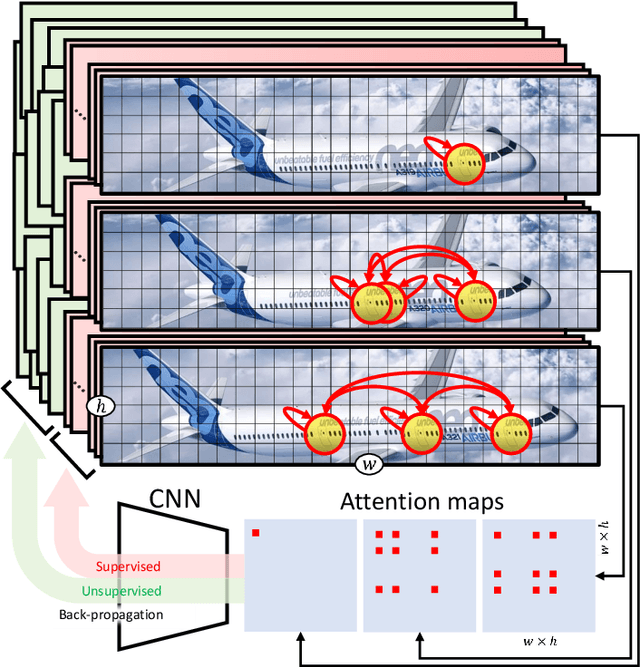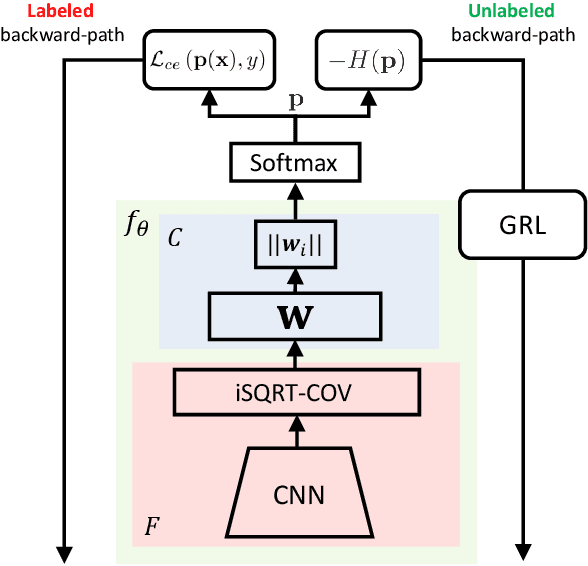Daniele Mugnai
CL2R: Compatible Lifelong Learning Representations
Nov 16, 2022Abstract:In this paper, we propose a method to partially mimic natural intelligence for the problem of lifelong learning representations that are compatible. We take the perspective of a learning agent that is interested in recognizing object instances in an open dynamic universe in a way in which any update to its internal feature representation does not render the features in the gallery unusable for visual search. We refer to this learning problem as Compatible Lifelong Learning Representations (CL2R) as it considers compatible representation learning within the lifelong learning paradigm. We identify stationarity as the property that the feature representation is required to hold to achieve compatibility and propose a novel training procedure that encourages local and global stationarity on the learned representation. Due to stationarity, the statistical properties of the learned features do not change over time, making them interoperable with previously learned features. Extensive experiments on standard benchmark datasets show that our CL2R training procedure outperforms alternative baselines and state-of-the-art methods. We also provide novel metrics to specifically evaluate compatible representation learning under catastrophic forgetting in various sequential learning tasks. Code at https://github.com/NiccoBiondi/CompatibleLifelongRepresentation.
Fine-Grained Adversarial Semi-supervised Learning
Oct 12, 2021



Abstract:In this paper we exploit Semi-Supervised Learning (SSL) to increase the amount of training data to improve the performance of Fine-Grained Visual Categorization (FGVC). This problem has not been investigated in the past in spite of prohibitive annotation costs that FGVC requires. Our approach leverages unlabeled data with an adversarial optimization strategy in which the internal features representation is obtained with a second-order pooling model. This combination allows to back-propagate the information of the parts, represented by second-order pooling, onto unlabeled data in an adversarial training setting. We demonstrate the effectiveness of the combined use by conducting experiments on six state-of-the-art fine-grained datasets, which include Aircrafts, Stanford Cars, CUB-200-2011, Oxford Flowers, Stanford Dogs, and the recent Semi-Supervised iNaturalist-Aves. Experimental results clearly show that our proposed method has better performance than the only previous approach that examined this problem; it also obtained higher classification accuracy with respect to the supervised learning methods with which we compared.
 Add to Chrome
Add to Chrome Add to Firefox
Add to Firefox Add to Edge
Add to Edge